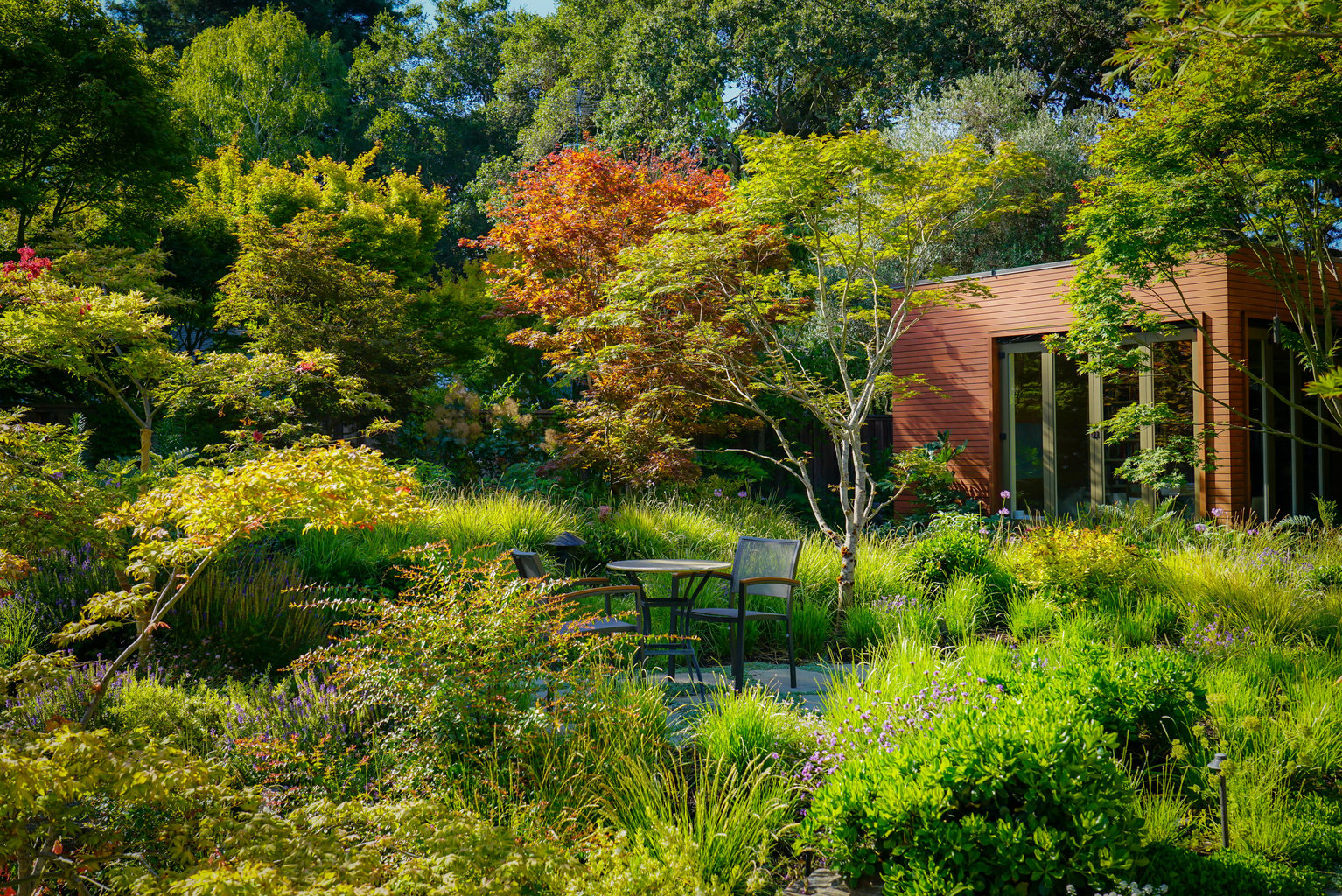
Contributor
- Topics: Archive
Grasses are in the news!
A recent front-page article in the San Francisco Chronicle extolled the virtues of a tropical grass now being tested by the University of Illinois as a potential biofuel crop.
Depending, one supposes, on their political persuasions, the newspaper’s readership might have given a generous nod of approval to this development, or casually moved on to news of America’s psuedo-celebrities. Meanwhile, horticulturists would have dug deeper, searching for the identity of this supergrass. They would have discovered it to be a clone of Miscanthus ×giganteus. So, what, pray tell, is that?
The answer may be found in this splendid book by noted grasses expert Rick Darke. This volume represents a sumptuous evolution from his Color Encyclopedia of Ornamental Grasses (1999), and, although this new book might be mistaken for a typical oversized piece of prettiness to decorate the coffee table, it is ever so much more than just big and beautiful.
It is comprehensive, up-to-date, and mature. Darke shows us grasses (which he no longer finds necessary to describe as “ornamental”) as bona-fide denizens of the modern garden and, further, places them in the forefront of the movement to develop ecologically functional, “natural” landscapes.
He notes that, in the few years since the publication of his Color Encyclopedia, the popularity of grasses “has resulted in a huge increase in the diversity of plants available to gardeners.” Reflecting this abundance, he devotes slightly more than half of the present (rather hefty) volume to an exhaustive listing of grasses, sedges, rushes, cattails, and, yes, those strange favorites of western gardeners, the restios.
He illustrates most of these entries with his own bright, clear photographs, many of which depict the plants in a landscape context—a nice touch that makes it much easier to visualize them in one’s own garden. That he is a trained botanist as well as a highly skilled horticulturist is evident in each informative entry.
The botanist steps forth in the second chapter, where his photos, drawings, and text detail the characteristics of each major family of grasses and grass-like plants. The horticulturist shines in three full chapters, one covering the necessities of care and maintenance (with some astute observations on the issues of weediness and ecological invasiveness), and two that glory in the esthetics of grasses in the landscape. Grasses are shown embellishing everything from parking lots to grand old hotels, and from private gardens to sweeping natural meadows. He shows us his own garden in Pennsylvania and features some of the exuberant designs incorporating grasses created by Christopher Lloyd (England), Oehme and van Sweden (USA), Roberto Burle Marx (Brazil), Piet Oudolf (The Netherlands), Beth Chatto (England), and other designers from around the world.
We are treated to both the subtleties and the drama of color, texture, form, and scale. And we become acquainted with the unique way that grasses play with light, as well as with their capacity to provide sound, movement, and a sense of transition through the seasons.
In his opening chapter, Grasses & the Global Garden, Darke frames the ecological overview that he wishes us to use in receiving all the other information he provides: he wants us to be aware of the impact that all gardeners can have on the world beyond their garden’s gate.
And about that supergrass, the one that might solve all of our energy problems? Darke includes Miscanthus ×giganteus among more than ten pages of silver grass selections. He traces its horticultural history to Japan, its introduction into Western landscapes back to the 1930s, its hybrid origin to the exact two parent species, and includes the chromosome count of the offspring. He, of course, provides all the particulars for cultivating the plant and lists two of its cultivars. As always, this author has done his homework.
Bob Hornbeck, grassologist
Occidental, California
Share:
Social Media
Garden Futurist Podcast
Most Popular
Videos
Topics
Related Posts

Low Maintenance Gardens – Better for Pollinators and People
Autumn 2022 “I come out every day. It’s therapy, my meditation.” Janet’s young garden transformed from overgrown, invasive plants to mostly natives. The dailiness of

Invasive Plants Are Still Being Sold: Preventing Noxious Weeds in Your Landscape
Autumn 2022 With so many beautiful ornamental plant species and cultivars throughout California and the Pacific Northwest, how do you decide which ones to include

Garden Design in Steppe with Transforming Landscapes with Garden Futurist Emmanuel Didier
Summer 2022 Listen to full Garden Futurist: Episode XVII podcast here. Emmanuel Didier, Principal and Creative Director at Didier Design Studio is a leading figure

Seslerias: Versatile Groundcover Meadow Grasses
Summer 2022 Without question, the most beautiful and versatile of all the groundcover meadow grasses are the moor grasses (Sesleria). Moor grasses tick off all








Responses